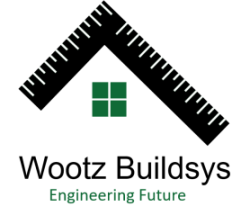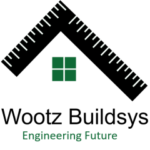Pre-engineered metal buildings (PEMBs) have become a popular solution for industrial projects. These buildings offer a flexible, cost-effective, and efficient way to construct large structures. Whether you are planning to build a warehouse, factory, or storage facility, pre-engineered metal buildings are designed to meet the specific needs of industrial projects while providing numerous advantages.
Here, we’ll explore why pre-engineered metal buildings are ideal for industrial projects and answer some common questions about them.

What is a Pre-Engineered Metal Building (PEMB)?
A pre-engineered metal building is a structure that is designed and manufactured off-site in a factory setting. The components of the building, including steel frames, columns, and panels, are fabricated according to the project’s specifications. Once completed, these components are transported to the construction site, where they are assembled and erected. This method significantly reduces the time and cost required to complete construction projects.
Key Benefits of Pre-Engineered Metal Buildings for Industrial Projects
1. Cost Efficiency
One of the main reasons industrial project managers choose pre-engineered metal buildings is their cost efficiency. Traditional construction methods can be expensive and time-consuming, but PEMBs offer a more affordable solution. By utilizing standardized designs and components, PEMBs minimize waste and reduce material costs. Additionally, the speed of construction means less labor is required, further reducing overall expenses.
2. Faster Construction Time
Time is often a critical factor in industrial projects. With pre-engineered metal buildings, construction timelines are significantly shorter compared to traditional methods. Since the components are manufactured off-site, the on-site assembly process is quick and straightforward. This makes PEMBs an excellent choice for projects with tight deadlines or those requiring immediate expansion.
3. Design Flexibility
Despite their standardized nature, pre-engineered metal buildings offer great design flexibility. These buildings can be customized to suit the specific requirements of industrial projects. Whether you need a large open space for machinery or special storage requirements, PEMBs can be designed to accommodate various layouts, dimensions, and functional needs.
4. Durability and Strength
Pre-engineered metal buildings are built to last. Made primarily of steel, these structures are highly resistant to weather, fire, and pests, making them ideal for industrial environments. They are built to endure extreme conditions like heavy snowfall, powerful winds, and seismic events. Their durability ensures that they will require minimal maintenance over the years, saving both time and money in the long term.
5. Energy Efficiency
Another advantage of pre-engineered metal buildings is their energy efficiency. Modern PEMBs can be designed with insulation and energy-saving features that help regulate temperature and reduce energy consumption. This is especially important in industrial settings where temperature control is essential for operations or storage. By incorporating energy-efficient solutions, companies can reduce operational costs and achieve sustainability goals.
6. Scalability and Expansion
As industrial needs grow and evolve, so do the facilities. Pre-engineered metal buildings offer excellent scalability, allowing for easy expansion or modification in the future. Whether you need to add extra space or reconfigure the layout, PEMBs can be expanded quickly and efficiently without the need for major structural changes. This makes them an ideal choice for businesses that expect growth or require flexible building solutions.
Common Applications of Pre-Engineered Metal Buildings in Industrial Projects
Pre-engineered metal buildings are suitable for a wide range of industrial applications, including:
- Warehouses: PEMBs are perfect for large storage spaces due to their open design and ability to accommodate shelving and racking systems.
- Manufacturing Facilities: With high ceilings and wide-open areas, PEMBs are ideal for housing heavy machinery and production lines.
- Distribution Centers: The durability and scalability of pre-engineered metal buildings make them well-suited for logistics and distribution operations.
- Cold Storage: These buildings can be insulated and climate-controlled for cold storage needs in the food, pharmaceutical, and other industries.
- Workshops and Garages: PEMBs are commonly used for workshops, vehicle storage, and equipment maintenance areas.
Conclusion
For industrial projects, pre-engineered metal buildings offer a practical, cost-effective, and durable solution. From faster construction times to design flexibility, energy efficiency, and long-term durability, PEMBs provide numerous advantages that make them the perfect choice for warehouses, manufacturing facilities, and distribution centers. If you are planning an industrial project, consider the benefits of pre-engineered metal buildings and how they can meet your specific needs.
FAQs (Frequently Asked Questions)
Q. How long does it take to construct a pre-engineered metal building?
The construction time of a pre-engineered metal building depends on its size and complexity. However, since the components are pre-fabricated, the on-site assembly can be completed in a matter of weeks, significantly faster than traditional construction.
Q. Are pre-engineered metal buildings customizable?
Yes, pre-engineered metal buildings offer a high degree of customization. You can tailor the building’s size, design, and layout to meet your specific industrial requirements.
Q. How durable are pre-engineered metal buildings?
Pre-engineered metal buildings are extremely durable and can withstand harsh weather conditions, fire, pests, and even seismic activity. They are designed to provide long-lasting performance with minimal maintenance.
Q. Are pre-engineered metal buildings suitable for large industrial projects?
Absolutely. Pre-engineered metal buildings are commonly used for large industrial projects such as factories, warehouses, and distribution centers due to their scalability, strength, and cost-effectiveness.
situs togel toto togel toto togel togel online toto togel toto togel jacktoto situs toto jacktoto situs toto situs slot situs toto slot gacor jacktoto jacktoto slot online


